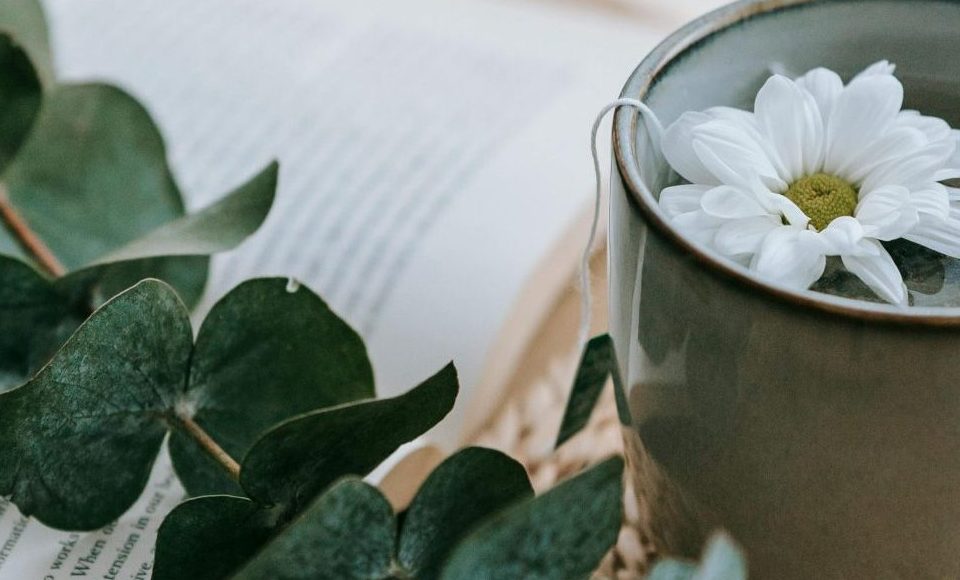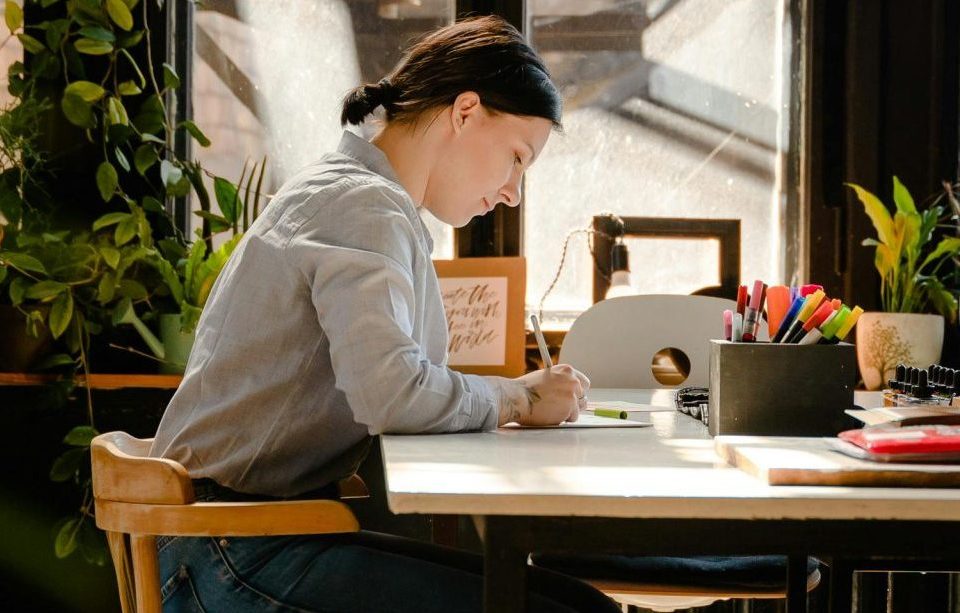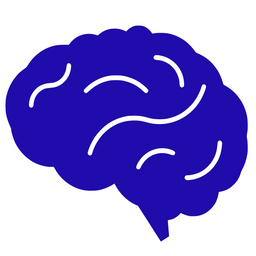
- How to Write a Band 6 Creative?


HSC Module B: Band 6 Notes on T.S. Eliot’s Poetry
Full mark band 6 creative writing sample.

- Uncategorized
- creative writing
- creative writing sample

Following on from our blog post on how to write creatives , this is a sample of a creative piece written in response to:
“Write a creative piece capturing a moment of tension. Select a theme from Module A, B or C as the basis of your story.”
The theme chosen was female autonomy from Kate Chopin’s The Awakening (Module C prescribed text).
This creative piece also took inspiration from Cate Kennedy’s Whirlpool .
Summer of 2001
For a moment, the momentum she gained galloping in the blossoming garden jolted, and she deflated like a balloon blown by someone suddenly out of breath. A half-smile, captured by the blinking shutter.
Out spluttered the monochrome snapshot. A bit crumpled. A little too bright.
Two dark brown braids, held by clips and bands and flowers, unruliness constrained. The duplicate of her figure came out in the Polaroid sheltered between a stoic masculine figure, and two younger ones just as unsmiling as their father. The mother stood like a storefront mannequin, the white pallor of her skin unblemished by her lurid maroon blush.
Father told the children that their mother was sick. That’s all. Having nightmares about their grandmother who left mother as a child. “Ran off,” he had said, and his nose twitched violently. “Left a family motherless, wifeless.”
I run, too, the girl had thought excitedly. When she ran, she could see the misty grey of the unyielding lamp-posts, and hear the same grunts and coos of pigeons unable to sing, melodies half-sang, half-dissonant. Why don’t they ever sing? Like the parrots and the cockatoos and lorikeets?
Out spluttered another photograph.
Void of the many distresses as analogous to adulthood, her face brimmed with childlike innocence, untroubled by the silhouettes of her father and brothers.
Spring of 2012
“Can you take a picture for us?”
She was on the other side of the camera, and for a moment she was lost in a transitory evocation of her childhood. The soft blush of the children and the hardened faces of the adults. The forced tightness of their figures. They too looked happy, she supposed, amidst the golden sand and waves that wash the shore.
Away from the flippancy of clinking wine glasses and high-pitched gossip, she felt could almost hear the ticking seconds of each minute, each hour.
She returned the phone to the family.
How still they stood! The unmoving figures on the compact screen. A snapshot of the present that has instantaneously become the past. If only her childhood could extend infinitely to her present, and future, then she would again experience that luscious happiness that seemed to ebb with age. The warm embrace by her mother. The over-protectiveness of her father. How strange it was, to think that she had once avoided both.
But no matter.
She can’t return to the past. All she could do is reminisce about it. It was futile, she knew. The physician had told her so.
“Think about the present!” he had said. “You live too much in the past! Talk to your family! Your husband!”. After a glance at the confounded face, he added, “You grew up with caring brothers, I believe?”.
She nodded.
“Surely,” he elongated the word so that it extended into the unforeseeable future, “they must understand.”
No, they didn’t, she thought. Not after their Marmee left.
She remembered how perfect her family had been, captured undyingly on that monochrome photograph. Her brothers and her, mother and father. Yes, what a perfect family. Oh, how the opened eye of the camera would watch apathetically as they fastened together, to perfection.
It all fell apart five weeks afterwards, as they listened her father’s monotonous voice reading the last remnant of their mother – a note declaring how their perfection had compromised her, been too stifling, just as that Summer’s humidity had been. Wasn’t that what it meant to be a family, she had thought, to let give you to others willingly for the happiness of the entire family?
Absentmindedly, the grown woman picked up a bayberry branch and drew circles upon circles on the siliceous shore. Where it touched, the sand darkened and lightened again as the water rose.
The ultimatum of my life, she proposed to herself, a rebellious dive at sea! Amused by her dramatism, she continued to muse. How simple it would be, washed away and never coming back. Her family now was perfect enough. Big house. Big car. Big parties. Big dreams. But happiness? She thought of the riot of colour and flashing cameras that her husband loved. Oh, how they caused her migraines! And his insistence for her to abandon those childhood passions of hers, strolling amidst sunny afternoons amidst the greenery, only embody their “Marmee” and his “Honey”. How ridiculous!
Her hand halted to a stop.
For a fleeting moment, the continuum of her oblivion terminated, the angular momentum her hand gained by drawing those perfect circles on the shore jolted. She inflated with the sudden realisation of what she had written on the sand.
Short, and incomplete without the usual Jennings that followed it. But her name nonetheless.
Yes, those ephemeral imprints of her name will be washed away by the infinite rise and fall of the tide. But she still watched. So that when the present became the past, she would still have a snapshot in her memory to hold on to.
She knew she could not go, just like her name. Into the ocean and never come back. She could not possibly go like her mother, who when she was eleven, left a family without a mother and husband without a wife. She could not possibly go like her mother, who left a daughter crushed by the milliseconds of perfection that succumbs so soon after the click of a camera.
With a long sigh, she turned back and the sea becoming a reverberating picture of her past. Intangible, yet outrageously glorious…
11th March, 2015
The mother, on her phone, manicured fingernails swiping the screen absentmindedly. Across the room, the father looked concerned at both the inattentiveness of his wife and the sounds of clanking metal emanating from the cameramen.
“We’re ready, Mrs Jennings,” said one of them, “Please get into position for the family photo!”
The opened eye of the camera watched as the family fastened itself together, the rosy-cheeked daughter and son, the unison of the family creating the epitome of perfection. They smiled vibrant smiles, posed jovially at the flashing lights.
But immediately after the click of the shutters, they all fell apart, insubstantial as a wish.
- How our ex-student and current tutor transferred to a Selective School
- HSC Module B: Band 6 Notes on T.S. Eliot's Poetry
- How to Write a Band 6 Discursive?
Related posts

JP English Student Successes: How Colette Scored within the top 10% band for writing in the Selective Exam

James Ruse Graduate’s Tips on How to Write An Engaging Narrative Opening

James Ruse Graduate’s Tips on How to “Show, Not Tell” in Creative Writing
Press Enter to search
HSC Creative writing reflection cheatsheet: with examples!!
Completely lost on how to write a reflection for module C HSC? We got you. A step by step guide on how to write the perfect reflection piece, with template structures and exemplars! It really is the ultimate cheatsheet.
a year ago • 5 min read

What is a reflective text in the HSC?
NESA doesn’t provide a definition for what reflective text is. However, they do define reflection as:
“The thought process by which students develop an understanding and appreciation of their own learning. This process draws on both cognitive and affective experience.”
This includes the following features:
- Use of first person to express self-assessment
- Use of evaluative language ( my metaphor was effective in... )
- Considered use of examples ( this means quoting your own work )
- Use of anecdotal references, imagery or metaphor
- Explanation, description or justification of the use of specific language or stylistic devices
- Connections between what students learn about writing and the writing that they craft
- Self-awareness of the learning process
Essentially, the reflection is designed to get you critically thinking about your own writing choices. It also gives you the chance to justify to the marker the stylistic choices you made and point out hidden nuances they might have missed.
So how do you write a band 6 reflection?
1) answer the question.
2023 MOD C Question 3. (b)
Justify how the stylistic choices you have made in part (a) demonstrate the hope that comes with anticipation. In your response, make detailed reference to your writing in part (a).
Like an essay, your reflection should still have a logical structure with a strong 'thesis' like a start and linking sentences that connect back with the question. Now this year they didn't ask you to reference your prescribed text (and you won't be penalised for not mentioning them at all!) but you can if you still want to. What is important however is that throughout your reflective piece, you are exploring the stylistic choices you have made and linking them to how to help communicate your ideas of hope and anticipation.
The term stylistic choices is very broad meaning you can almost write about anything! To ground yourself, centralise your writing around these three macro narrative elements.
- Characterisation
How did you use language (syntax, metaphors, alliteration, dialogue) to create a certain character/setting/tone? And by creating this particular character/setting/tone, how did that influence the message you are attempting to communicate with your reader? With reference to the 2023 HSC reflection question, how did your depiction of character/setting/tone demonstrate the hope that comes with anticipation?
This isn't the only right approach and there are a million other things you can talk about but it is a good way to start thinking if you are feeling lost.
2) Introduction
Reflections should still have the same intro, body, and conclusion structure as essays. It's a good idea to have a template in mind going into exams so you can focus on the actual analysis in your body paragraphs.
Your introduction must consist of three things which I like to split up into three sentences. A very simple three-sentence introduction.
- The aim and purpose of your piece.
- How you were influenced by your prescribed text?
- How through this influence, you made stylistic choices to communicate your purpose. (In other words, TECHNIQUES!!)
My (insert text type) (insert title) aims to (insert key message of your piece). I was influenced by (introduce prescribed text and author) whose (what did the author do that influenced you?) to explore (insert their key message). Hence, by mirroring their use of (insert the stylistic devices you were influenced by) I employed (insert your main techniques) to (connect back to your purpose).
My imaginative magical realism piece, "The Calling" aims to highlight the importance of having ambition in order to sustain a meaningful and satisfying existence in capitalism's mundane and bleak chokehold. I was influenced by Franz Kafka's novella "Metamorphosis," whose comedic dialogue and dynamic characterisation developed an effective satire that propounded his commentary on 20th-century existence. Hence, by mirroring Kafka's satire, I employed situational irony and hyperbolic language to...
3) Body paragraphs
For exams, you should prepare at least 2 body paragraphs, three if you want to be extra prepared for a heavily weighted reflection question however those are extremely unlikely. The typical expectations to follow per mark distribution are as follows;
- 5 marks - 1 page (One big body paragraph or super condensed essay. One or two sentences for the intro, one body/main point, and one or two final concluding sentences for the conclusion)
- 8 marks - 1.5 ~ 2 pages (Three sentence intro, two short paragraphs, 2 quotes each, conclusion)
- 10 marks 2 ~ 3 pages (Three sentence intro, three short 2 quote paragraphs or two big 3 quotes, conclusion)
How should you base your body paragraphs?
The main way I recommend you structure your paragraphs is through macro stylistic choices. What I mean by this is to choose two or three big things your text does. For example, you can have your first paragraph about setting, then tone and characterisation. Then within that use quotes that display the micro techniques you used to create said setting/tone/characterisation.
Other ideas could be having your first paragraph about your use of irony throughout the text, then include examples of how you used hyperbole or dialogue to create this irony. Then your next paragraph could be about the main motif in your and the metaphor and imagery used to develop this motif.
Basically what you are doing this thinking about what are the macro stylistic devices that run throughout your piece and how are they developed with micro stylistic devices.
*Remember PEEL is still your best friend here.
In order to explore this apathetic and creative paralysis, I develop a dichotomous depiction of creativity (technique) to examine the idea that individuality has disintegrated and original perspectives have lost meaning amongst the proliferation of literature in an overwhelming digital context. Inspired by Spotty Handed Villainesses (reference prescribed text) , I employed a nostalgic pathos-evoking anecdote to highlight the importance of reading to the human experience. The imperative metaphor “I am an amalgamation of tales” (quote 1) portrays the individual ability to have creative perspectives as limited to their ability to read. Influence continues into Atwood’s binary exploration of the angel/whore split enticing me to examine creativity dichotomously as not the ‘freedom’ to invent but rather a constrained ability to extract from our experiences. The cliche “all there is to know is at the touch of our fingertips” (quote 2) utilises the synecdoche of ‘fingertips’ to illuminate the way technology has degraded the individual experience of perspective; with everything given to us we have lost the desire to explore and as a result, we have lost our source of creativity and ability to function meaningfully as an individual.
Basically, you are analysing your own writing here, just like how you analyse normally, except in first person and with a tone of reflection (very important)!!!
4) Conclusion
Your conclusion doesn't need to be too much. For a band 6 response, you should have been continually drawing conclusions and insights throughout your body paragraphs already. This means, you only need one or two sentences at the end to sum everything up.
You want to address the three key points from your introduction;
- Restate your aim/purpose.
- Influence from prescribed text.
- Main stylistic choices.
Ultimately, by drawing upon the [stylistic device 1] and [stylistic device2] used in [prescribed text], I have effectively conveyed [your key message].
Remember to also connect back to the question!! This can be done in another sentence if necessary.
Another example:
Therefore, my imaginative piece evokes the emotions associated with hope and introspection through manipulating language structures such as syntax and imagery, drawing stylistic inspiration from Nam Lee's ‘ Love, Honour, Pride ’.

Want more personalized study guidance to help drastically improve your marks? A private tutor can make the biggest difference!
Spread the word
Year 3 naplan writing - how to help your child develop writing skills and score top bands, cracking the code: strategies for excelling in ib math aa and ai, subscribe to our newsletter.
Stay updated with KIS Academics Blog by signing up for our newsletter.
🎉 Awesome! Now check your inbox and click the link to confirm your subscription.
Please enter a valid email address
Oops! There was an error sending the email, please try later

IMAGES
VIDEO